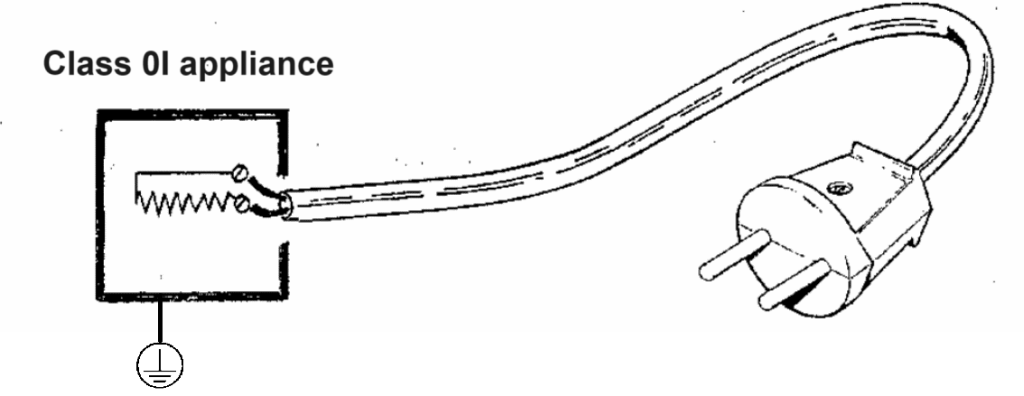Clause 3 – How to understand the definition of “class 0 appliance”
class 0 appliance: appliance in which protection against electric shock relies upon basic insulation only, there being no means for the connection of conductive accessible parts, if any, to the protective conductor in the fixed wiring of the installation, reliance in the event of a failure of the basic insulation being placed upon the environment.
NOTE Class 0 appliances have either an enclosure of insulating material which may form a part or the whole of the basic insulation, or a metal enclosure which is separated from live parts by an appropriate insulation. If an appliance with an enclosure of insulating material has provision for earthing internal parts, it is considered to be a class I appliance or class 0I appliance.
This kind of appliance has no protective earthing device, and at the same time, only one layer of insulation wraps the live parts, or a layer of insulation is used to isolate the user from the live parts. Most countries do not accept Class 0 appliances. Only some countries with a mains voltage (rated voltage) of 100V such as Japan and 120V such as the United States and Mexico accept Class 0 appliances. It is necessary to mention here that in order to achieve the same input power (for example, a room heater with a rated power input of 3000W), the lower the rated voltage, the greater the corresponding working current will be. On the contrary, if the rated voltage is high, the corresponding input current will be low. In the case of high current, the heating of the current-carrying parts in the product will be more serious, and the corresponding possibility of fire will be greater, so the requirements for fire protection will be more stringent. In the case of low current and high voltage, the heating of the current-carrying parts is not serious, but because of the high voltage, the possibility of insulation breakdown becomes greater, and the corresponding anti-electric shock requirements are more stringent. This is why the IEC 60335 series of standards has such high requirements for protection against electric shock. The main writers of the IEC 60335 standard are experts from countries with a rated voltage of 220-240V, while the US UL series of standards has even stricter requirements for fire protection. Normally, there is no such device in which all live parts are protected by basic insulation only. It is common that most of the protection measurement against electric shock can still meet the requirements of double insulation or reinforced insulation. Of course, there are also basic insulation plus grounding protection structures. The common situation is that there is only one layer of wire sheath on the supply cord, and the protection level of the device is determined by the basic insulation of the supply cord, that is, the lowest protection level of class 0.
The following two pictures show the information of the supply cord for class 0 appliance. One shows the schematic diagram and the other shows the supply cord with plug.



The following figure is a schematic diagram of a class 0 appliance. The effect is not very obvious. You need to compare it with the schematic diagrams of class I appliance and class II appliance to check



